Wall coverings: types, advantages and expert advice
When decorating a space, the floor often forms the surface to which the most attention is paid. A prominence that is not fortuitous. This is primarily due to the fact that it is the coating that is most exposed to impacts, abrasion and traffic. A situation that causes a large part of the efforts, and also the budget, to be focused on getting the choice of material that covers said pavement right.
However, the decoration of walls and other vertical surfaces should not be neglected. Even though they do not suffer the same wear as floors, the wall coverings constitute one of the most powerful elements at an aesthetic level. A distinguishing component that will provide even more personality and sophistication to the room you wish to renovate.
Decorating a wall is not limited to painting it with the colors that are currently in vogue. You have to go further. Because although it is still a more than valid alternative to use as a wall covering, the range of possibilities is practically unlimited. To opt for one coating or another, a series of considerations must be taken into account.
Among other things, it is necessary to consider which wall covering best matches the decorative style of the space. As well as what maintenance and cleaning it requires or if it fits or exceeds the budget available.
In this article we are going to talk at length about what are the most used wall coverings and why. We will delve into the main characteristics and advantages of each one of them as well as the advice from the experts. Recommendations that will help you choose the material that best fits your needs. Ready?
What is wall cladding?
The wall cladding is a type of material that is applied to vertical surfaces in order to decorate and protect them. A coating that can be placed in interior spaces as well as on exterior facades, depending on the needs and tastes of each particular person.
There are wall coverings galore. Marble, ceramics or microcement, are just some of the most popular. Depending on the characteristics of each one, it is necessary to apply one or more layers, consequently changing the final appearance. Not to mention that the added benefits vary greatly from one coating to another. That's why it's so important to carefully weigh the pros and cons of each wall covering individually.
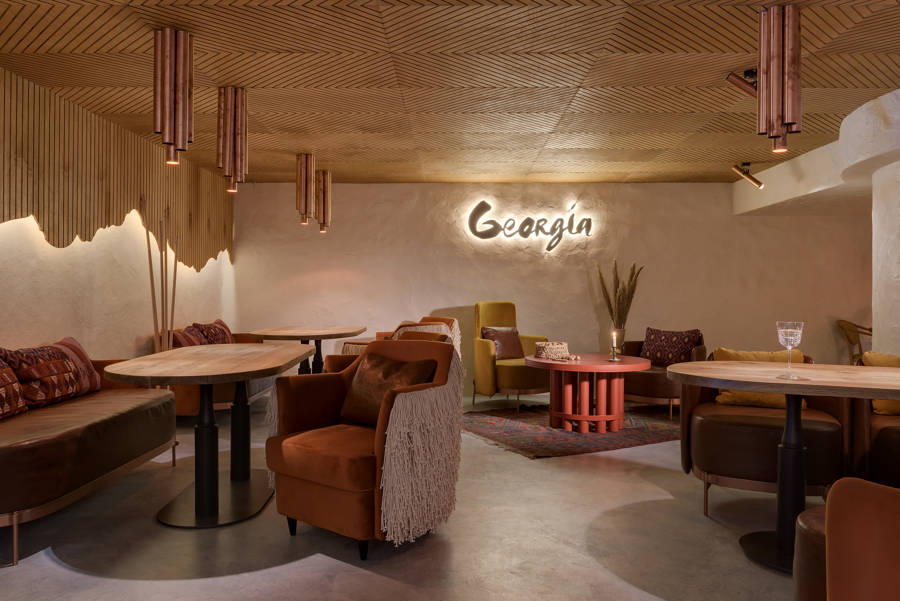
Tips for choosing wall coverings From the experts!
There are all kinds of wall coverings so that the walls of the house, office or any commercial premises can shine with all kinds of materials that exude style and elegance. But for experts, one of the main issues to consider is to correctly decree the finishes of the different environments. The goal is none other than the materials applied to the walls are pleasing to the eye.
A task that is not at all simple given the number of options the market offers. A whole world to discover where the quality of the material, the budget, the aesthetics and the execution times of the work are fundamental. Next, we are going to develop the main issues that experts recommend analyzing in detail to choose the ideal wall covering. Pay attention!
Define the aesthetics of the wall cladding
What is the aesthetic you are looking for? That is the first question you have to answer, before choosing one wall covering over another. Since each one provides a very characteristic and personal decorative finish. Guiding yourself solely by the resistances of the material is a mistake for experts, since the final result can be far from what was expected.
Not all materials represent different decorative styles in the same way. For example, to create a rustic style, opting for wall coverings such as wood or stone is a safe bet. Similarly, to create a Mediterranean style, Venetian stucco can be a great idea and microcement for a more minimalist and avant-garde decoration.
Weigh the maintenance that the wall cladding requires
It is as important to carefully evaluate the aesthetics as the maintenance that each wall covering requires once it has been installed. If this factor does not concern you, you can decorate the walls without any problem with natural wood, stone or brick, whose cleaning and maintenance are more demanding.
On the other hand, if your priority is to combine aesthetics with minimal maintenance and cleaning, you should look for wall coverings that are continuous and whose lack of joints minimize the process. Materials such as microcement can become your best allies.
Ensure the durability and comfort of the wall cladding
In the choice of wall cladding one must think in the long term. This translates into the durability of the material: the chances of cracks and crevices appearing over time, whether it will lose colour or if a repair will be necessary for it to remain in perfect condition.
Similarly, one must not forget about the thermal comfort and also the acoustic comfort that each of the wall coverings available on the market offers. Do they provide soundproofing? Are they thermal insulators? Do they resist moisture? And temperature changes? Since believing that "dressing" the walls fulfills a mere decorative function is not only a misunderstanding, but it can lead to most unpleasant problems in the future.
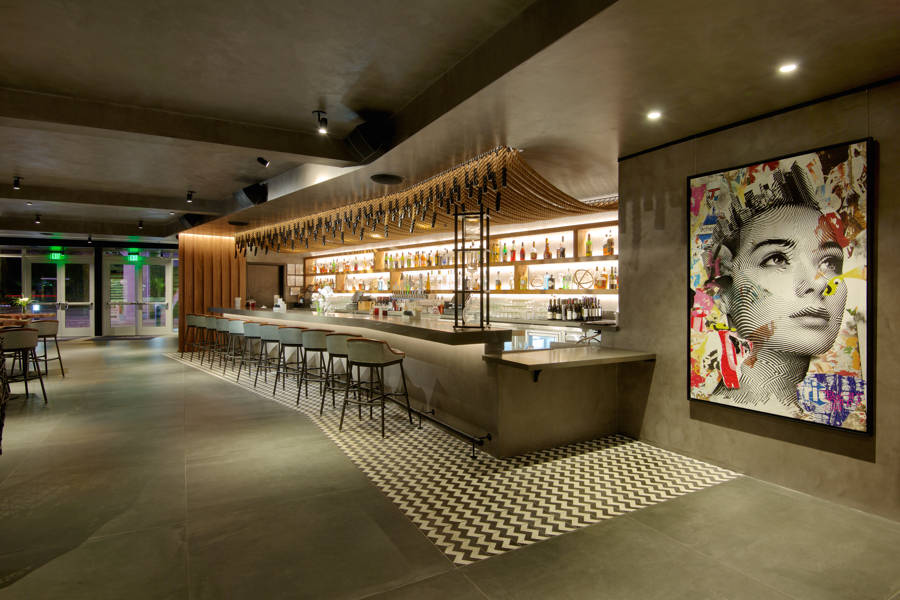
Opt for a wall covering that is easy and quick to install
Time is gold. In this sense, having wall coverings that are simple and quick to install narrows down the list of possibilities. And if at the same time they guarantee high-quality technical performances, it greatly facilitates the final choice.
Microcement, for example, is a wall coating that meets all these requirements. It is easy and quick to apply in addition to having excellent resistances. A thin material that adheres to the current wall without any construction involved. It is compatible with plasterboard, plaster, marble, and tiles, some of the most common wall coverings.
Choosing a wall covering that fits the budget
For the end, we have left one of the most transcendental factors in the selection of one wall covering or another: the price. The quality of the material, the dimensions and complexity of the work, the execution time that the professional needs to carry it out, whether or not to remove the existing material from the wall, etc.
In this regard, some of the most expensive wall coverings are stone, natural wood or ceramics. A cost that is reduced compared to tiles, PVC or microcement, among others.
What are the most used wall coverings? Take note!
The selection of a wall covering is subordinate to the needs required by each space. While for decorating a bathroom you have to look for a material that is waterproof and resistant to environmental humidity, for a living room or a hallway the requirements are not similar at all. Next, we are going to detail the advantages of the wall coverings that are the most demanded today. A list that includes tiles and porcelain stoneware, wood or natural wood panels, wallpaper, brick, stone, Venetian stucco, polished cement and microcement. Here we go!
Tiles and porcelain stoneware, classic wall coverings among the classics
Tiles and porcelain stoneware are two of the most traditional wall coverings but also the safest. Betting on them is always a success, especially in home rooms such as bathrooms and kitchens thanks to the resistance they provide against moisture or stains.
Wall coverings that have been evolving over time in terms of colors and textures of the plates. This innovation makes it possible for everyone to decorate any space in a very creative way, creating the most refined and exquisite environments. On the other hand, these are two materials that require continuous cleaning and maintenance due to dirt accumulation because they have joints. In addition, construction work is necessary and machinery is needed for their installation.
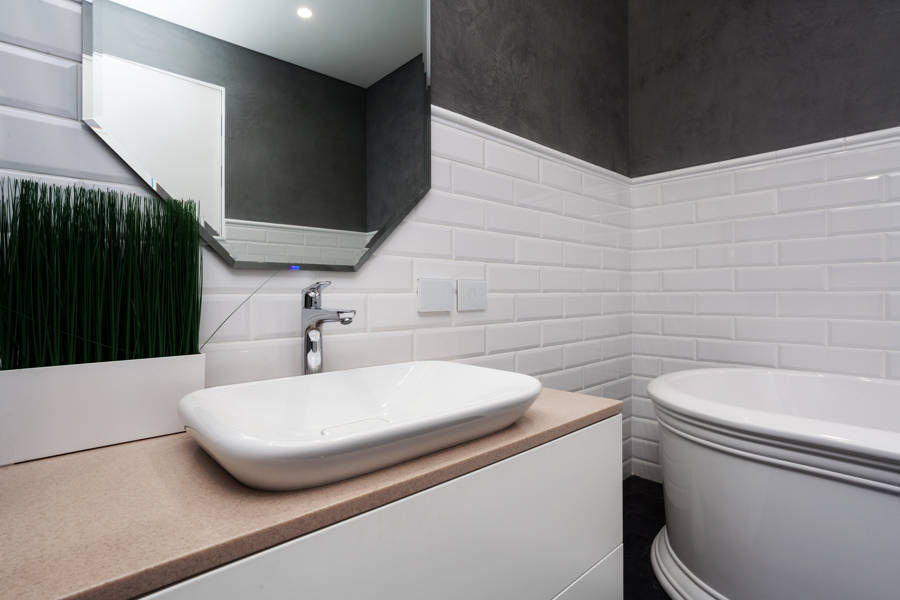
Wallpaper, a "simple" wall covering that never tires
If you are looking for speed in application without giving up a current aesthetic, wallpaper is the ideal wall covering. There are as many colors and patterns as there are decorative styles. Finding one that fits the dream environment couldn't be easier. The best part? It's impossible to get tired of it. If you do, you just have to remove it and replace it with a new one. Very convenient, right?
If you are encouraged to use wallpaper as a wall covering, you should know that there are several types. On one hand there is the lining paper, which is used when the wall has some kind of irregularity or has been previously painted with a paint, for the sake of redundancy, in poor condition.
The wallpaper that does not wash is the most economical. But as a counterpart, it is a wall covering that is not very resistant and therefore not recommended for use in bathrooms or kitchens. And it is a coating that absorbs moisture and that in the event of staining is very difficult to fix.
But, you'll be glad to know, there's also a washable wallpaper. And yes, as you can imagine, it's one of the most demanded. It resists environmental humidity, scratches, and stains. Advantages that make this wall covering highly recommended not only for bathrooms and kitchens, but also for passageways.
And to finish, the vinyl wallpaper, a wall covering much more durable than its predecessors because it is very resistant to moisture and stains. In addition, it can be washed without problems with a damp soft cloth. Resistance and ease of cleaning. And many, but many models to choose from capable of teleporting you to any place because of their striking designs.
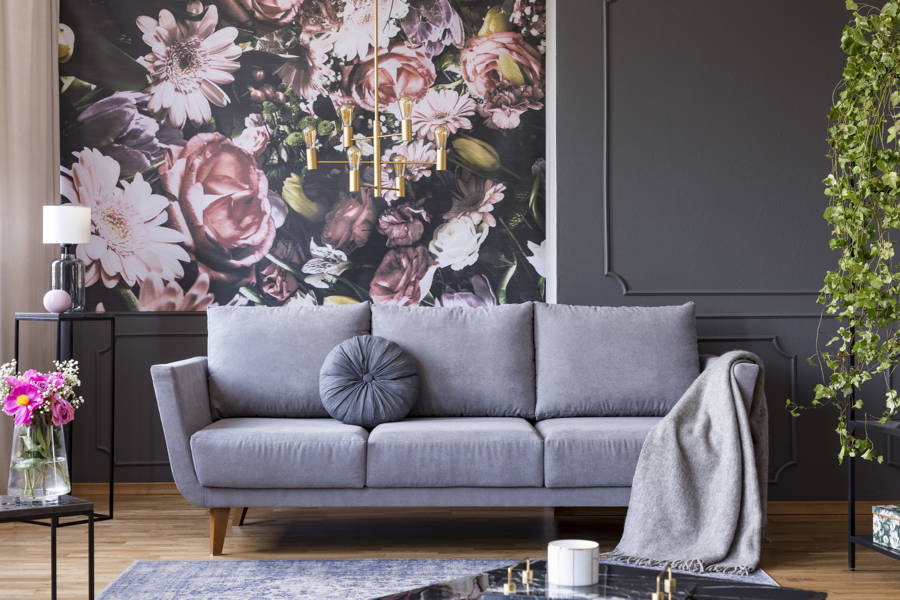
The modernity and elegance of stone as a wall covering
A project with stone as wall cladding is synonymous with its own personality. A material that brings a charm and special aura to the houses built in the past as well as the rooms that incorporate this finish.
One of the wall coverings that offers modern and elegant finishes like few others, but that stand out thanks to their extraordinary benefits. Such as its insulating capacity to decrease the intensity of sounds or to maintain the temperature inside the room.
A material that is not at all porous and, therefore, avoids moisture at all costs as well as the proliferation of bacteria. The durability and its fireproof nature are other of the most outstanding benefits of a wall covering that never goes out of style. A long-term bet but, in the case of natural stone, it must be remembered that it is a more expensive coating compared to others.
A decorative resource that has the ability to completely transform a room occupying just a few meters. However, experts recommend that in the case of using this wall covering, it should be done in a measured way to prevent the space from becoming too overloaded.
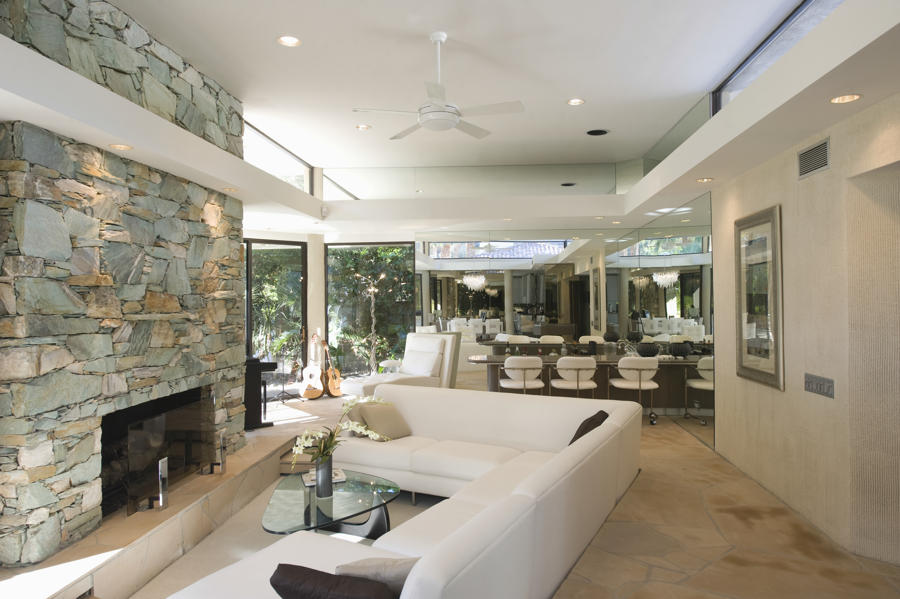
Brick: the wall cladding made in New York
The decorative style of the New York loft dates back to the 40s, when the excessive price of rents forced commercial premises to be converted into homes. An optimization of resources at that time, a decorative trend that sweeps wherever it goes today.
And it is that the influence of the New York-style loft remains very present thanks to the use of brick as a wall covering. A material that promotes the creation of open, industrial and authentic spaces. A coating that may seem simple at first but that imbues any room with character.
Years will continue to pass and exposed brick will remain a very stylish wall covering. Especially if it is used to configure an accent wall and make the contrast with the rest of the room even more striking if possible.
The main advantages of brick are its low maintenance, durability, ability to provide a sound barrier, heat resistance as well as the wide variety of colours available.
However, it is a wall covering quite difficult to repair when damaged, as it is not an easy task to replace a single brick without having to remove the entire wall. A downside to which must be added that the accumulation of moisture can trigger over time that the brick ends up breaking.
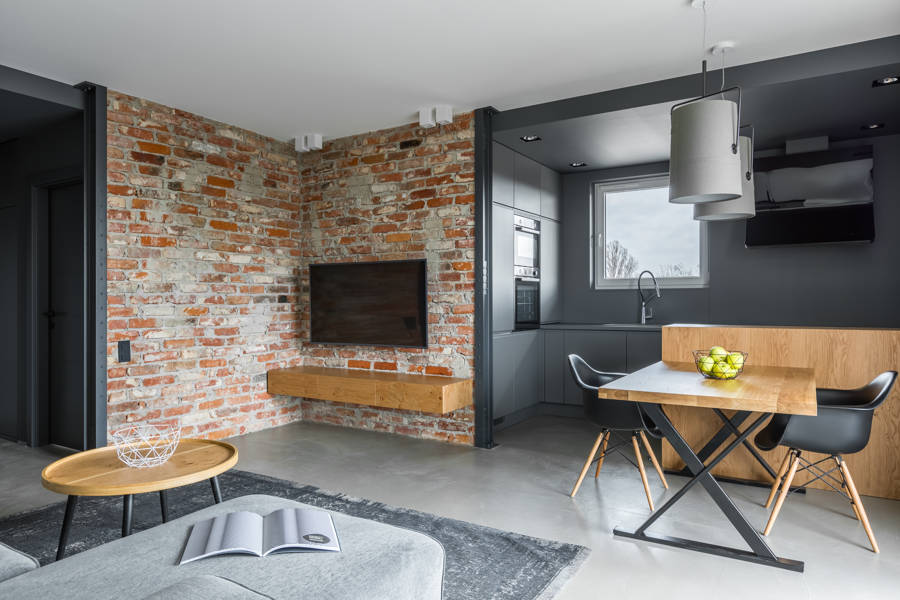
Microcement, the wall coating with the most resources
We can emphatically state that microcement is the most versatile wall covering that exists. It has plenty of reasons. Starting with its lack of joints and construction, which allows it to be placed on almost any material without generating debris and paying the corresponding labor. This allows the space in which it is applied to continue to be habitable during a much faster process than other materials.
In just a few days, you could be enjoying the new microcement wall cladding. An added value that architects and decorators exploit for the remodelling of large sites such as shopping centres, hotels and restaurants.
Likewise, it is a very resistant material and does not crack over time, so betting on itmicrocement on walls it is to have the guarantee of a coating in perfect condition for a very, very long time. The textures are also very varied, as depending on the type of application that the professional carries out, the most different visual effects can be created. Decorative finishes with water effect, with greater or lesser relief, that resemble lime stucco, polished cement, etc.
The wide variety of colours of this wall covering also largely accounts for the popularity it has gained in recent years, along with the waterproof finishes that can be conferred on it. Precisely for this reason, it is used so much in bathrooms and kitchens.
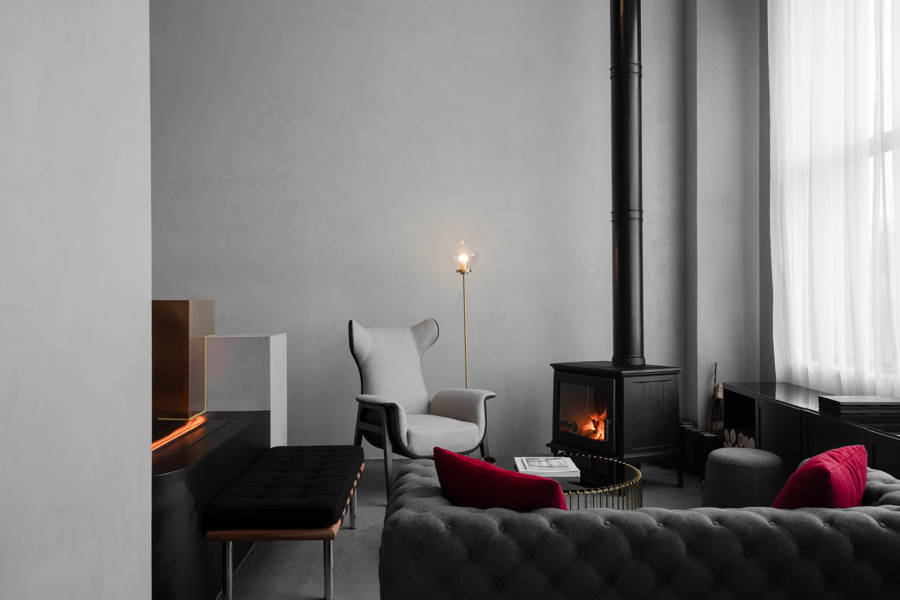
Rust effect paint, a trendy wall coating
The rusted finish merges the new with the old. A combination fully trending in interiors due to the immense decorative possibilities it offers. You can achieve styles ranging from more classic and rustic to more industrial and modern environments.
A natural and vintage aging aspect that has become an increasingly demanded decorative resource as a wall covering. Not only in homes, but in large businesses such as restaurants and hotels that manage to create an aesthetic element of rupture that attracts all eyes.
A very easy and quick effect to achieve thanks to a good rust effect paint. A product that will provide the coated walls with a unique, natural, and very durable design. But not only in interior spaces. Also in exteriors creating the most imposing facades.
At Topciment we have developed Classic Mettal, a rust effect painta ready-to-use list that stands out for its extraordinary adhesion and durability. With high adhesion to the support, it can be applied as a wall coating on a multitude of supports: microcement, concrete, metal, brick, plaster, etc. The final finishes are simply spectacular, since Classic Mettal is formulated with metallic particles of copper, iron, bronze, and brass.
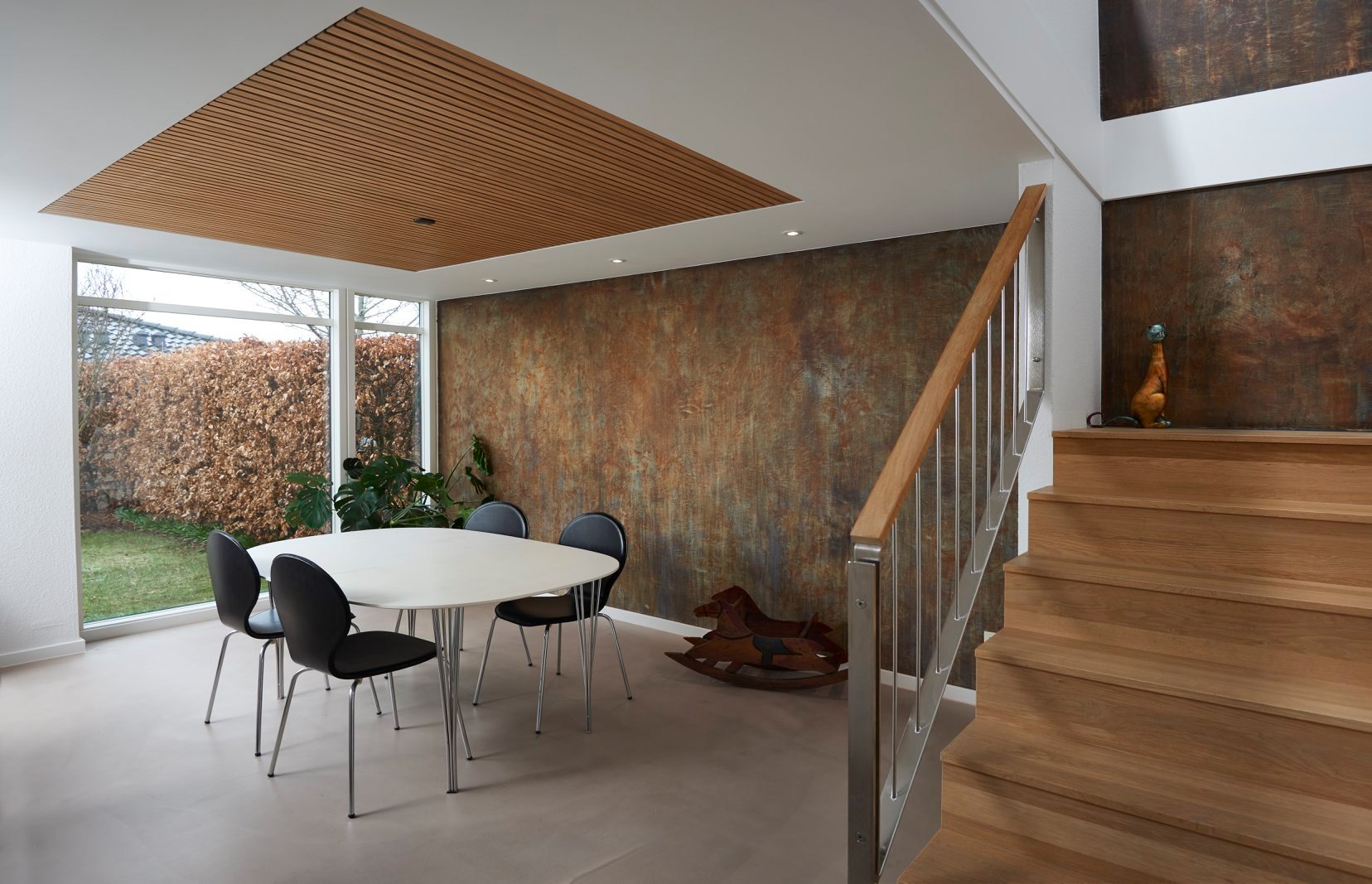
Venetian stucco, a wall covering with a lot of tradition
The saying of "every past fashion comes back" couldn't be more true. It's the case of Venetian stucco, a wall covering that emerged in Venice in the 15th century and it's not that it has come back, it's that it has never left.
The marble effect that is achieved with the was Venetiancontinues to be one of the most demanded decorative finishes for its beauty. A finish that is most interesting and original that also endows elegance and sophistication to the room in which it is applied.
Thanks to its artisanal and shiny texture, a very luxurious high decoration finish is achieved. But beyond its aesthetics, what dignifies Venetian stucco as a wall covering is its durability and resistance. That's why it can be used in living rooms, bedrooms, hallways and even bathrooms, for the most daring.
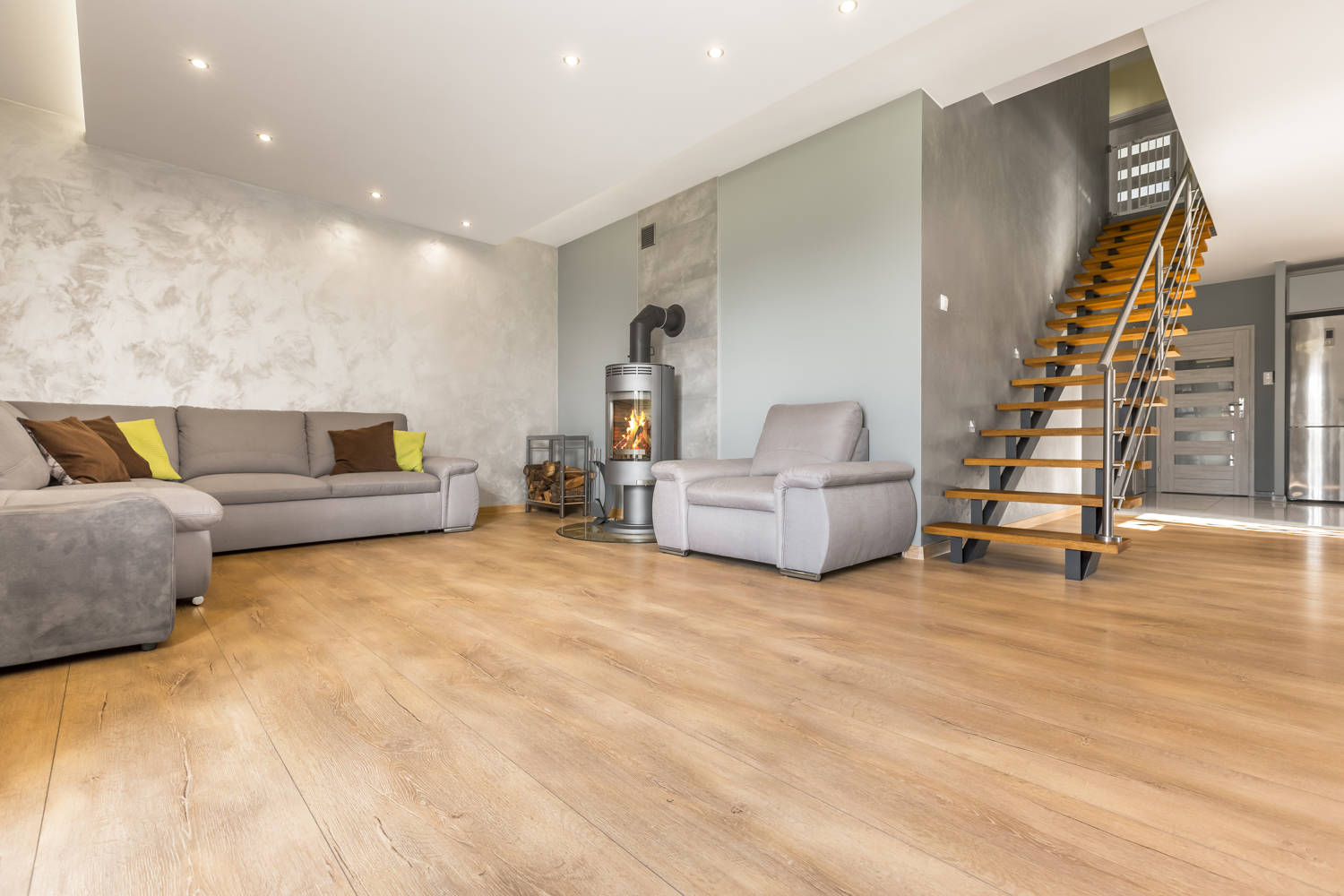
Wooden panels or natural wood, the wall cladding that is on the rise
Wood is one of the most requested wall coverings. A material that perfectly matches all types of materials and makes the room in which it is incorporated more welcoming. A coating that conveys warmth, harmony, and balance among all elements.
You can choose from a wide variety of wood types to be used as wall cladding. Oak, pine or walnut are just some of the many alternatives available. There's just one catch. All natural woods require a series of special care through specific products that provide shine and resistance to the coating. Not to mention that they are more expensive.
Therefore, the demand for materials that mimic natural wood is skyrocketing in the market. Laminates whose finishes resemble considerably but have the advantage of not being so demanding in maintenance. And much cheaper.
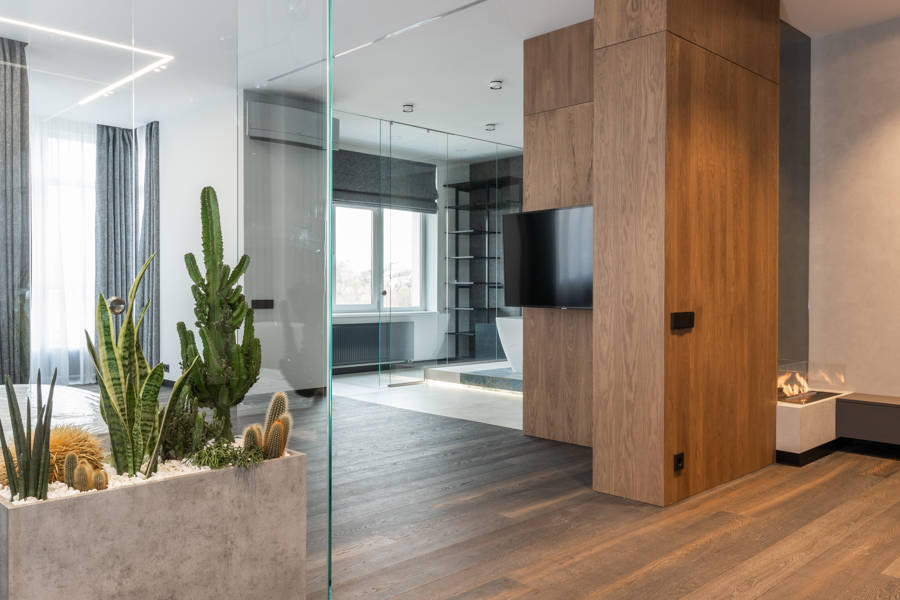
Topciment, experts in the manufacture of wall coverings
At Topciment, we have been manufacturing a wide variety of decorative solutions for nearly two decades, including wall coverings: microcement, epoxy microcement, metallic paints, rust effect paints, glazes...
Don't hesitate tocontact usso that our sales technicians can advise you on which wall covering best suits your needs.
Subscribe to our newsletter
Receive in your email tips for the application and care of microcement, the latest trends and news from Topciment products.




